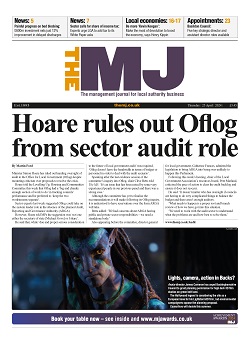Earlier this month I passed a milestone: 14 years with Green Park.
If you’d told me in 2009 that I’d be here in 2023 and thinking about 2024 I might not have believed you, yet here we are. But if I think of just about every single executive interim management recruiter I know, they aren’t working in the same company now as they were back in 2009.
And that got me thinking. As I tour the country talking to chief executives and other senior officers, I am struck by the same, perennial problem. It’s not new, we’ve been talking about it for years and it still hasn’t been solved. Namely succession planning. Or, in most cases, a fear that there simply isn’t enough succession in the ranks to plan with. As well as elections and the ongoing wicked issues (among others) around inspections, investment, budget cuts, the climate emergency and the cost of living crisis, senior officers always tell me they are worried about succession planning.
So why? The permanent recruitment market looks to be booming right now, with 2023 seeming to want to outdo 2020, 2021 and 2022 combined when it comes to people-moves. But dig a little deeper and there are some serious issues to contend with. Where, exactly, are all these people coming from? Naturally some will be drawn from outside the sector, although relatively few in reality. Many of course are taking their first step into a new level of seniority. An increasing number are moving sideways in what would still be seen as a promotion.
Let’s just look at the London borough CEO merry-go-round. At least three of the recent moves have been CEOs moving from one London borough to another, arguably, with no disrespect to the local authorities they are leaving, to more prestigious roles.
Elsewhere we are seeing more and more internal promotions, and where people join from roles outside of London there can still be a challenge with backfilling their post. And that’s before we consider retirements, many of which were delayed due to what may yet become known as the Covid Years over the last three years.
Here is where succession planning starts to look concerning. It’s a bit like taking out a second mortgage you can’t really afford just to buy a holiday home. ‘Robbing Peter to pay Paul’ is not a phrase of my choosing with its religious overtones so I apologise, but I’m struggling to find an alternative.
There is a strong sense that most shortlists for senior appointments are made up mainly of talent currently working elsewhere, plus very often, internal candidates. That’s nothing new of course, but in years gone by there was always enough slack in the system for this not to be a problem. I would argue that it is now one of the main pre-occupations for most chief executives and senior officers I talk to. Perhaps the most wicked issue of the day has become: ‘How do I ensure I have enough capacity in my authority to enable meaningful succession planning so that when I go – or if I lose a senior leader – there is a natural successor waiting in the wings?’
The answer, increasingly, is one of concern. The stark reality is that when a senior officer leaves a council these days, there is rarely the opportunity to restructure that post out of existence – that generally has already been done if it even can be. With structures already cut to the bone, spans of control have often increased, and while pay looks to be on the rise when you look at salaries on offer in these very pages, promotions are often happening from within, or from other local authorities.
This pushes councils towards acting up arrangements or if the succession simply isn’t there, to interim management solutions. Increasingly though, local authorities are finding it harder to ‘sell’ the concept internally of spending decreasing budgets on external interim hires unless there is a paramount need to do so. Whereas in previous years, councils might more readily deploy senior interims in preference to shuffling the pack internally, that tendency is starting to reverse. We are seeing more interim managers being benchmarked against internal talent even if that isn’t really comparing apples with apples. Still, one can argue that is a good thing and those responsible for workforce planning will feel justifiably proud whenever an internal candidate is successful against an external one. The same is true in permanent selection processes.
For many though, there simply isn’t the bandwidth in the system which means that the default position remains the use of senior interim managers. I have long argued local authorities that deploy interims judiciously after a robust process that focuses on the outcomes needed will get the best out of them. Even after 26 years working with councils to find the best interim managers I find it surprising how often the ‘brief’ is little more than the job description and very little thought has been given to what the interim might do or how their success might be measured, despite the significant investment.
And here we are, 11 years into sponsoring The MJ’s Local Authority of the Year award.
Phase one judging for this year’s Achievement Awards is complete and we have our finalists. They are a diverse bunch, but share many common successes. They all have stable leadership teams and, spoiler alert, we may just ask them a question or two about how they’ll ensure service continuity through their workforces when we see them next week.
Neil Lupin is managing partner at Green Park Interim & Executive Search.
Tel: 07967 826026
Email: neil.lupin@green-park.co.uk
This article is sponsored content for The MJ



